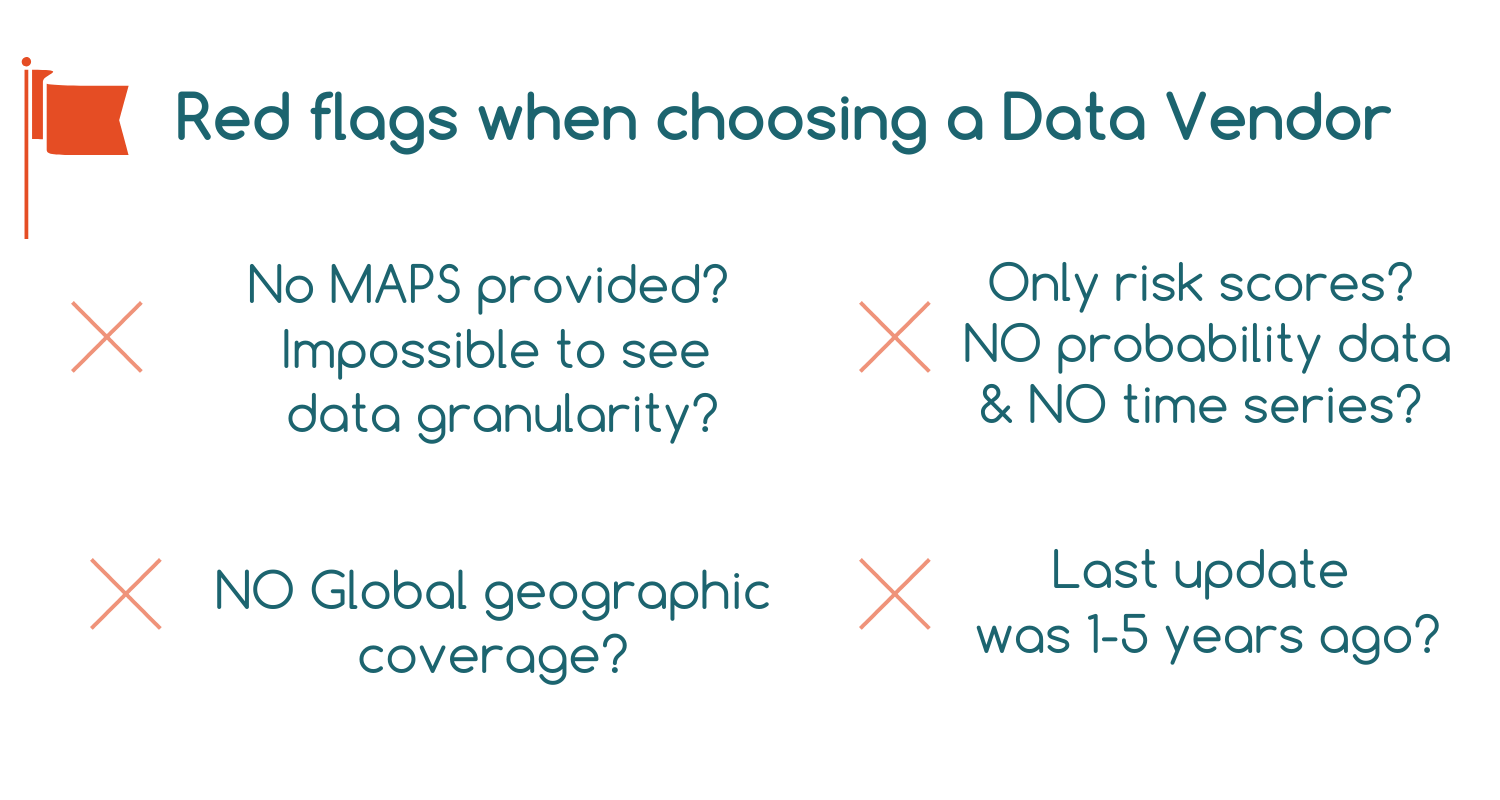
Key Factors to Consider When Choosing a Climate Data Provider
November 15, 2023
When you invest in a new facility, factory, or property, evaluating the cost of flood and wildfire insurance is a critical step. This cost is often tied to the underlying risk, making it essential to assess the exposure before proceeding.
What are the flood and wildfire risks for your investment? Is the risk manageable? Is it insurable?
Having in-house capabilities for physical climate risk analytics provides significant advantages when making investment decisions, hedging against risks, and managing broader portfolio risk. But what kind of climate data do you need for these assessments? How do you choose the best climate data provider? In this article, you’ll learn key tips for selecting the right data vendor.
1. Quantitative vs. Qualitative Data
Some providers offer only qualitative data, such as simple LOW - MODERATE - HIGH risk heatmaps. While this can be a useful starting point, it falls short if you aim to model detailed financial impacts. In contrast, quantitative (numeric) data enables more precise analysis, allowing you to compare risks across multiple locations, perform geographic mapping, and feed detailed analytical tools. Quantitative data is essential for building complex models, such as predicting the financial costs of specific climate risks.
2. Time Series vs. Single Data Points
When comparing historical and forward-looking climate risk scores, a time series of data allows for better trend analysis. Time series data can range from monthly, seasonal, and annual insights to decadal trends. Each flood risk score is valid for a specific time period, and the more detailed the time series, the better you can forecast and plan. Single data points, like a one-time risk score, lack this depth and limit long-term decision-making.
3. Delivery Time and Access
How quickly can you access the data? Some providers offer instant access through APIs or automated queries, while others rely on “over-the-counter” data requests that may take months to fulfill. Instant access can be critical in fast-moving industries where decisions need to be made quickly, while long delays can hamper your ability to respond to risks in real time.
4. Continuous Data Updates
Climate data should be updated continuously with new flood and wildfire events. This is why climate risk assessment is a technology product. New satellite data is incorporated into WTN risk database every month.
Having all relevant data in place, consistently updated with the latest information, ensures you’re always working with accurate and timely data. Outdated information can lead to poor decisions and financial losses.
5. Data Granularity
Granularity refers to the level of detail in the data. Does the provider offer data at the country, region, city, or even neighborhood level? The more granular the data, the better you can tailor your risk analysis. If a provider doesn't offer detailed geographic mapping tools, their data might lack the precision you need. Think of it like using a dating app without profile pictures—it suggests something crucial may be missing.
6. Geographic Coverage
Does the data provider cover the regions where you’re investing? Climate data must be relevant to the location of your assets. If you're investing globally, ensure the provider offers global coverage or supports the specific areas of interest.
7. Hazard Types
For Task Force on Climate-related Financial Disclosures (TCFD)-aligned reporting, it’s important to consider multiple types of climate hazards: floods, wildfires, heatwaves, droughts, and more. However, many providers cover only a subset of these risks. Make sure the provider covers all hazards relevant to your business or investment portfolio.
8. Data Types
Climate data comes in various formats, including risk scores, probabilities, and time series. Risk ratings are usually based on long-term historical data combined with independent climate models. For instance, assessing the probability of a catastrophic flood requires decades of data, not just one year. Understanding the most useful data type for your needs is crucial for accurate risk assessment.
9. Support with Data Integration
Finally, how easily can you integrate the data into your existing systems? A provider should offer robust support for integration, whether through APIs, customized platforms, or other tools. The easier the data is to integrate, the faster you can use it to make informed decisions.